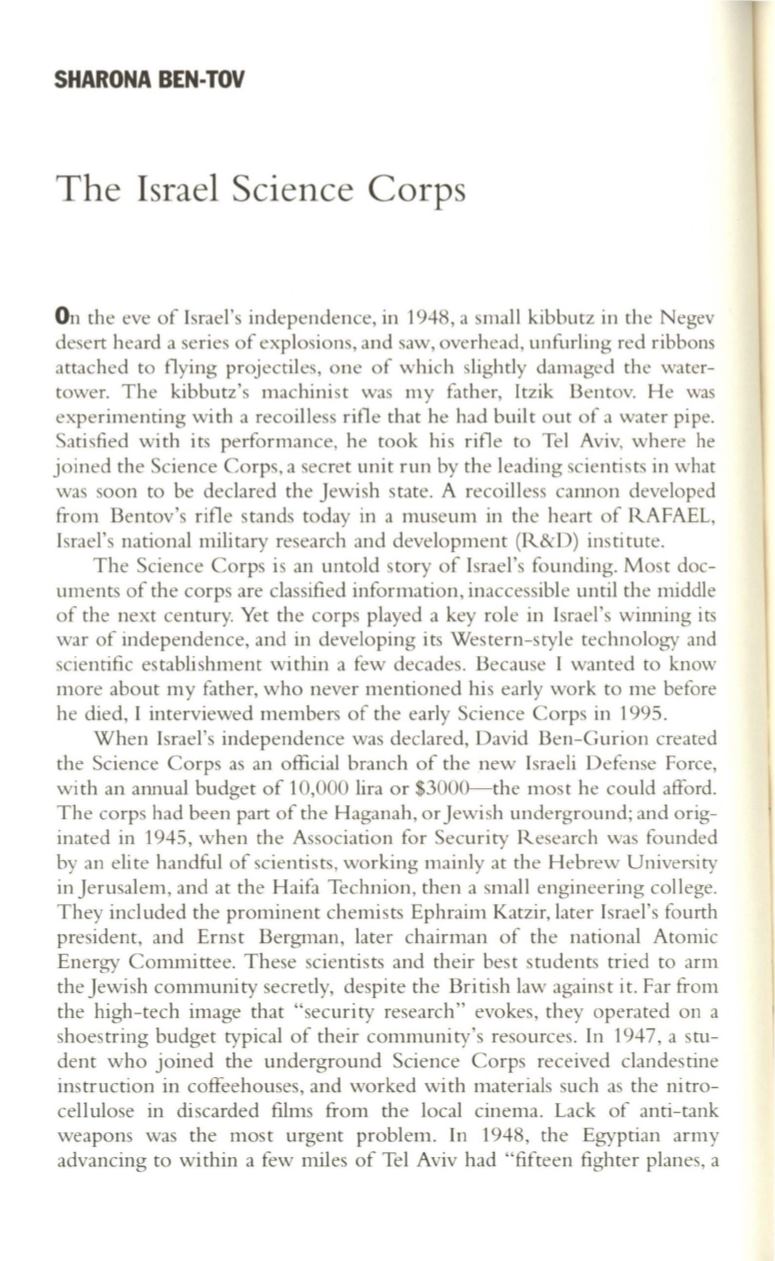
SHARONA BEN-TOV
The Israel Science Corps
On
the eve of Israel's independence, in 1948, a small kibbutz in the Negev
desert heard a series of explosions, and saw, overhead, unfurling red ribbons
attached to flying projectiles, one of which slightly damaged the water–
tower. The kibbutz's machinist was my father, Itzik Bentov. He was
experimenting with a recoilless rifle that he had built out of a water pipe.
Satisfied with its performance, he took his rifle to Tel Aviv, where he
joined the Science Corps, a secret unit run by the leading scientists in what
was soon to be declared the Jewish state. A recoilless cannon developed
from Bentov's rifle stands today in a museum in the heart of RAFAEL,
Israel's national military research and development (R&D) insti tute.
The Science Corps is an untold story of Israel's founding. Most doc–
uments of the corps are classified information, inaccessible until the middle
of the next century. Yet the corps played a key role in Israel's winning its
war of independence, and in developing its Western-style technology and
scientific establishment within a few decades. Because I wanted to know
more about my father, who never mentioned his early work to me before
he died, I interviewed members of the early Science Corps in 1995.
When Israel 's independence was declared, David Ben-Gurion created
the Science Corps as an official branch of the new Israeli Defense Force,
with an annual budget of 10,000 lira or $3000-the most he could afford.
The corps had been part of the Haganah, or Jewish underground; and orig–
inated in 1945, when the Association for Securi ty Research was founded
by an elite handful of scientists, working mainly at the Hebrew University
in Jerusalem, and at the Haifa Technion, then a small engineering college.
They included the prominent chemists Ephraim Katzir, later Israel's fourth
president, and Ernst Bergman, later chairman of the national Atomic
Energy Conunittee. These scientis ts and their best students tried to arm
the Jewish community secretly, despite the British law aga inst it. Far from
th e high-tech image that "security research" evokes, they operated on a
shoestring budget typical of their community's resources. In 1947, a stu–
dent who joined the underground Science Corps received clandestine
instruction in coffeehouses, and worked with materials such as the nitro–
cellulose in discarded films from the local cinema. Lack of anti-tank
weapons was the most urgent problem. In 1948, the Egyptian army
advancing to within a few nmes of Tel Aviv had "fifteen fighter planes, a


